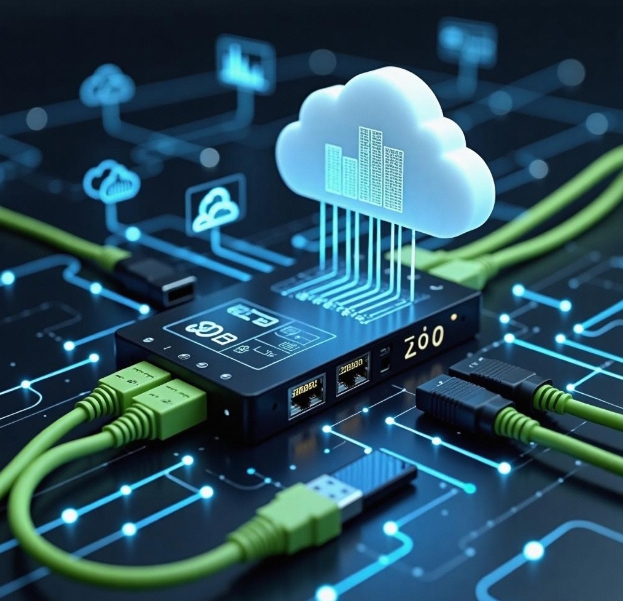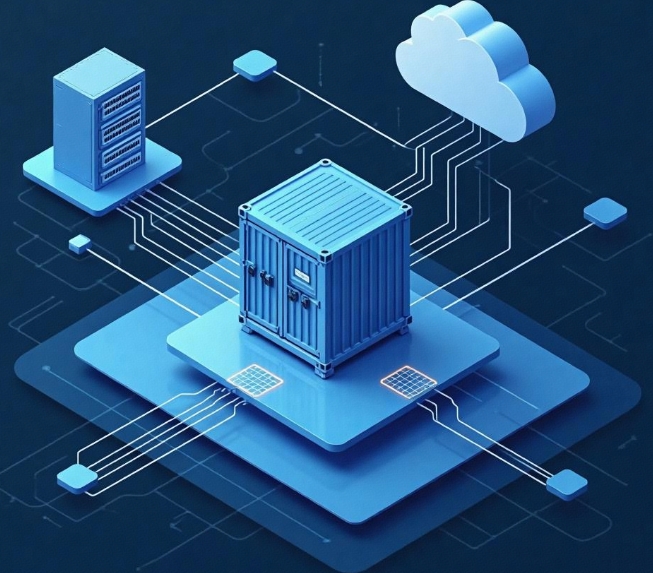Container technology and microservices architecture in cloud computing applications.
- latest articles
- 1.DApp Development & Customization: Merging Diverse Market Needs with User Experience 2.Analysis of the Core Technical System in DApp Project Development 3.How to achieve cross-chain interoperability in Web3 projects? 4.How does the tokenization of points reconstruct the e-commerce ecosystem? 5.How to Set and Track Data Metrics for a Points Mall? 6.What is DApp Development? Core Concepts and Technical Analysis 7.Inventory of commonly used Web3 development tools and usage tips 8.Development of a Distribution System Integrated with Social E-commerce 9.Six Key Steps for Businesses to Build a Points Mall System 10.What is DApp Development? A Comprehensive Guide from Concept to Implementation
- Popular Articles
- 1.Future Trends and Technology Predictions for APP Development in 2025 2.Analysis of the DeFi Ecosystem: How Developers Can Participate in Decentralized Finance Innovation 3.From Zero to One: How PI Mall Revolutionizes the Traditional E-commerce Model 4.DAPP Development | Best Practices for Professional Customization and Rapid Launch 5.Recommended by the Web3 developer community: the most noteworthy forums and resources 6.From Cloud Computing to Computing Power Leasing: Building a Flexible and Scalable Computing Resource Platform 7.How to Develop a Successful Douyin Mini Program: Technical Architecture and Best Practices 8.Shared Bike System APP: The Convenient Choice in the Era of Smart Travel 9.How to Create a Successful Dating App: From Needs Analysis to User Experience Design 10.From Design to Development: The Complete Process of Bringing an APP Idea to Life
As a revolutionary technology in today's IT industry, cloud computing has significantly accelerated corporate informatization processes and digital transformation. Within the architecture of cloud computing, container technology and microservices architecture are undoubtedly two key technologies. Their combination not only drives innovation in software development and operations but also provides enterprises with more efficient, flexible, and scalable application services.
I. The Rise of Cloud Computing and Container Technology
Over the past few years, cloud computing has evolved from traditional physical servers and virtual machines towards more efficient and flexible container technology. With advantages such as lightweight design, high efficiency, and ease of scalability, container technology has rapidly become a core component of cloud computing platforms.
1. Basic Concepts of Container Technology
Container technology is a method of packaging applications along with their runtime environments, ensuring that applications run consistently across different environments. Containers utilize operating system virtualization to run multiple isolated application instances on the same physical server. Compared to traditional virtual machines, containers do not require a full operating system; instead, they directly use the host operating system's kernel, making them lighter, faster to start, and less resource-intensive.
2. Advantages of Containers
Containerization enables seamless migration of applications across different environments. Whether in development, testing, or production, containers provide a consistent runtime environment, reducing issues like "it works on my machine." Additionally, container technology offers the following advantages:
Strong Isolation: Containers ensure each application runs independently without interference through process and filesystem isolation.
High Resource Efficiency: Containers share the host operating system's kernel, resulting in lower resource consumption compared to virtual machines.
Rapid Startup and Scaling: Containers start much faster than virtual machines and can be horizontally scaled within seconds.
Portability: Containers can migrate across different cloud platforms or operating systems without issues, greatly enhancing application portability.
3. Applications of Containers in Cloud Computing
Containers have a wide range of applications in cloud computing. Cloud service providers like AWS, Azure, and Google Cloud offer specialized container services, allowing enterprises to deploy, manage, and scale containers as needed. Containers also provide robust technical support for implementing microservices architecture.
II. The Integration of Microservices Architecture and Containers
Microservices architecture is an approach to building complex applications by breaking them down into small, independent, and autonomous services. Each microservice can be deployed, updated, and scaled independently, typically communicating via HTTP or message queues.
1. Basic Concepts of Microservices Architecture
Microservices architecture is a pattern that splits traditional monolithic applications into multiple small services. Each microservice focuses on a specific business function, with its own database, development, and deployment lifecycle. This architecture enhances development efficiency, system flexibility, and scalability.
2. Advantages of Microservices Architecture
Compared to traditional monolithic architecture, microservices architecture offers significant advantages, primarily in the following areas:
Flexibility: Each microservice can use different technology stacks, allowing flexible selection of development languages and databases based on business needs.
Independence: Each microservice is deployed and runs independently, reducing the risk of single points of failure.
Scalability: Microservices can be scaled independently without affecting other services, effectively addressing challenges posed by business growth.
Agile Development and Continuous Integration: The independence of microservices enables different development teams to work in parallel, promoting agile development and continuous integration.
3. The Perfect Combination of Containers and Microservices
The integration of container technology and microservices architecture provides unprecedented advantages for modern application development and deployment. Containerized microservices allow each service to run and scale independently, offering cloud computing platforms immense flexibility and elasticity.
Containers address challenges in deploying, managing, and scaling applications within microservices architecture. Using containers ensures consistent runtime states for microservices across different environments, greatly enhancing their portability and reliability.
Simplified Deployment: Containers package microservices with their dependencies, avoiding environment inconsistencies common in traditional deployments.
Rapid Scaling: Containerized microservices can be horizontally scaled quickly based on load, ensuring the system handles high concurrency and large-scale access smoothly.
High Availability and Fault Tolerance: Containers can recover quickly from failures, with container orchestration platforms (like Kubernetes) enabling automated management and scheduling to ensure high system availability.
III. Typical Applications of Containers and Microservices Architecture in Cloud Computing
The combination of containers and microservices architecture has been widely adopted in many enterprises, especially on cloud computing platforms. Here are some typical application scenarios:
1. Cloud-Native Applications
Cloud-native applications are designed and developed specifically for cloud environments, leveraging the advantages of cloud computing. These applications adopt microservices architecture, breaking down the application into small, independent services deployed via containers. Cloud-native application design, facilitated by container orchestration platforms like Kubernetes, enables automated deployment, scaling, and management, thereby improving application reliability and elasticity.
2. DevOps and CI/CD
DevOps integrates development and operations, emphasizing automation, continuous integration (CI), and continuous delivery (CD) to enhance development efficiency and release frequency. Containers and microservices architecture provide strong support for DevOps. The rapid startup and efficient management of containers enable efficient CI/CD processes, while microservices architecture allows teams to independently develop and deploy different services, avoiding bottlenecks common in traditional monolithic applications.
3. High Availability and Disaster Recovery
High availability and disaster recovery are critical requirements for enterprise-level applications in cloud computing. Through containerized microservices architecture, enterprises can achieve rapid application migration and recovery across different data centers and cloud platforms. Container orchestration platforms automate health checks and fault recovery for containers, ensuring quick recovery and minimizing downtime during failures.
IV. Challenges and Future of Container Technology and Microservices Architecture
Despite their significant advantages in cloud computing, container technology and microservices architecture face several challenges:
Management Complexity: Containerized microservices architecture often involves deploying, managing, and monitoring multiple services, requiring container orchestration platforms (like Kubernetes) for automation, which places higher demands on enterprise technical teams.
Data Management: In microservices architecture, each service may have its own database, making it challenging to ensure data consistency and integrity.
Security Issues: Container technology introduces new security concerns, especially in multi-tenant environments, where container isolation and security require special attention.
Looking ahead, as container technology and microservices architecture continue to evolve, automated operations, intelligent container orchestration, and cross-cloud container management will become key development directions for enterprise cloud computing platforms.
Conclusion
Container technology and microservices architecture are essential components of modern cloud computing. Their integration drives innovation and optimization in enterprise applications. Despite certain challenges, their advantages in enhancing application flexibility, scalability, and reliability make them core technologies in cloud computing. As technology continues to advance, we have reason to believe that container technology and microservices architecture will play an even more critical role in future cloud computing applications.
-

Applications and Challenges of Cloud Computing in the Internet of Things (IoT)
With the continuous advancement of information technology, cloud computing and t···
-

Integration of Cloud Computing and Artificial Intelligence: Enhancing Intelligent Applications
With the rapid advancement of technology, cloud computing and artificial intelli···
-

Data Security and Privacy Protection in Cloud Computing Applications
With the continuous advancement of information technology and the rapid developm···

 Blockchain
Blockchain












